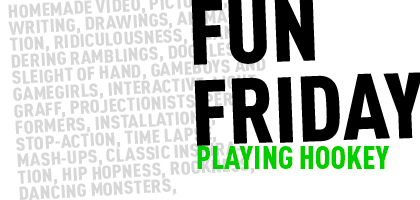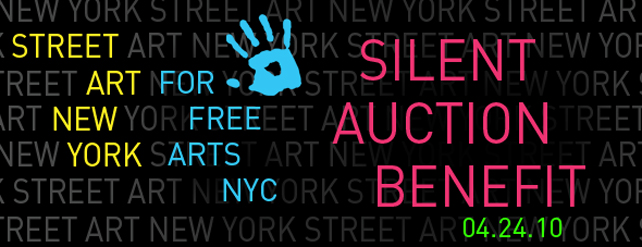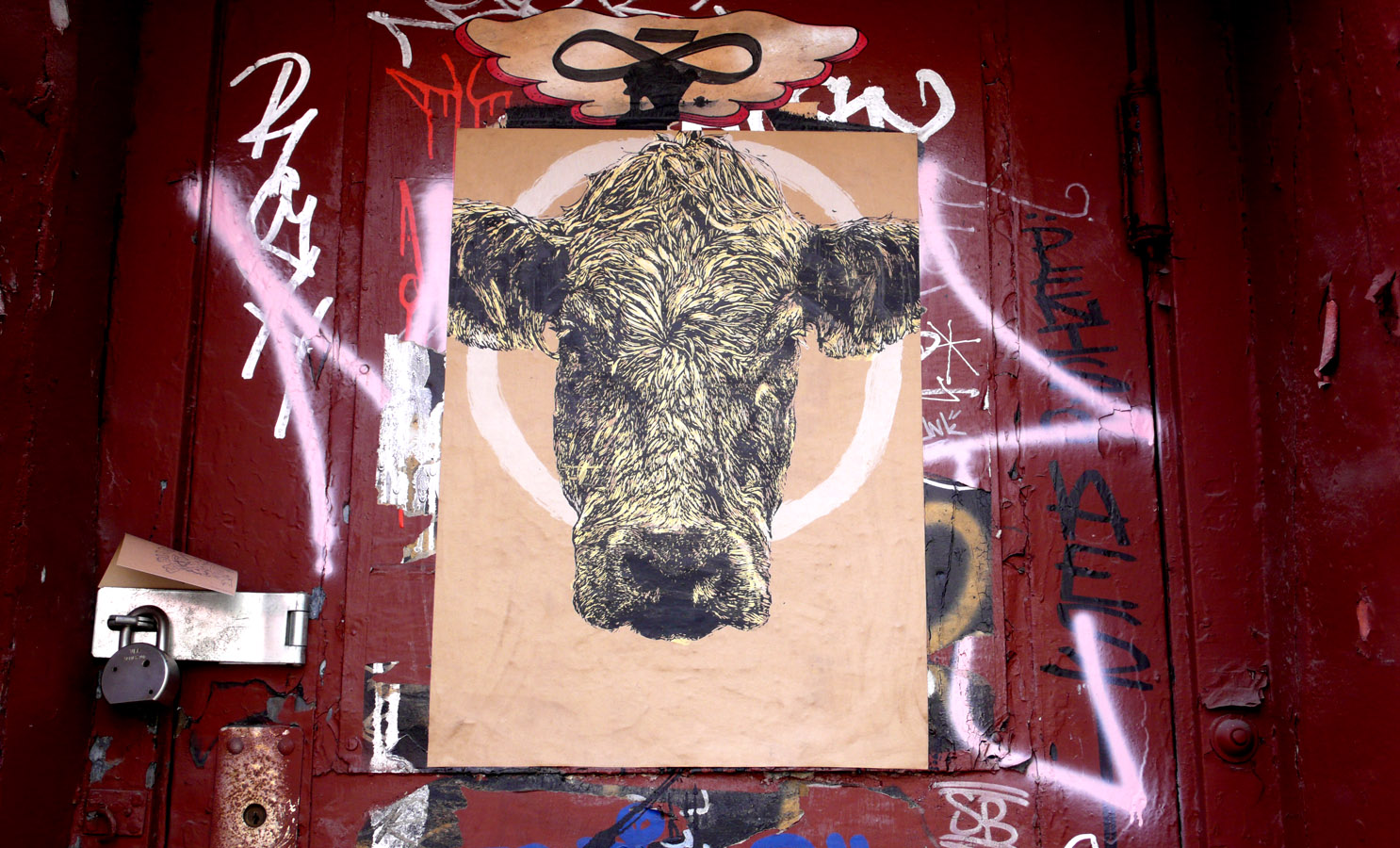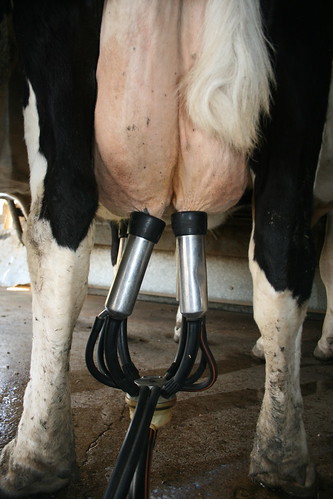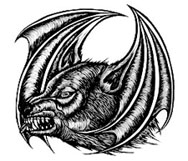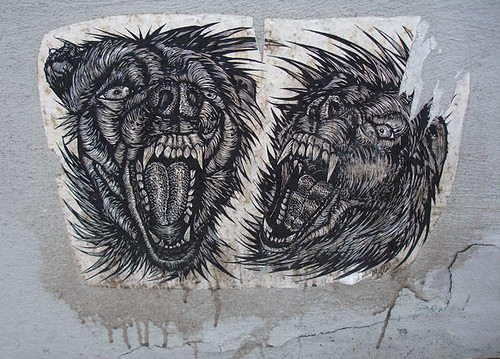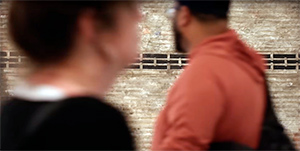This is the second half of a two part article and interview with street artist Gaia.
Click here for Part I

Plastic is keeping the clay damp on this new sculpture Gaia is working on (photo Steven P. Harrington)
Somehow the real commitment to the topic of animals as metaphor seems more tangible when you can touch and see the sculptures, hits and misses, and it also made me look back at the rest of the Gaia body of work collected in these short years.
The host is excited as we make our way out the back of the sculpture building into the sunny gold autumn, and we meet and greet friends and classmates all along the walk from the sculpture building to a small efficiency apartment live/work space that Gaia hangs out in.

A bicycle rim can be recycled as a halo, for those of you who were wondering what to do with them. (Gaia) (photo Steven P. Harrington)
A 2oo square feet kitchen/dining/office/bedroom all in one, it’s an unmitigated mess with high ceilings. One must kick a path through the scattered debris – an unmade futon, random strips of linoleum on the once white carpeted floor, a wooden kitchen table that doubles as a desk for homework, a tilting bookshelf, and a large 3’ x 5’ painted canvas by street artist friend Armsrock slung loosely on the wall, affixed with thumbtacks like a varsity flag for the anti-imperialist team. Okay, it’s a college student room, and it’s welcoming. Didn’t see any bongs – I know that’s what you were going to ask.

An oldie but a goodie by Gaia (photo Steven P. Harrington)
There was only time for a short interview because the easy conversation travels far from street art – family, parents, college life, divorce, growing up in New York, drugs, religion, how to roast an organic chicken, gender studies, Wall Street, cornrows in high school, art parties, Dan Deacon, and why the hell there are so many rows of houses abandoned and bricked up in the neighborhood near by.
Gaia is unceasingly introspective and verbally expressive in a way that tells you many theories and philosophies are simultaneously being examined and put into play at all times. It’s an experimental season and eventually one or two of these philosophical approaches will be settled upon, but there’s no imperative just yet. The dialogue never lags, and the amiable host will gladly broach almost any topic with you, even if you both lose track of the conversations original route.

(photo Steven P. Harrington)
Eventually the topic does return back to street art and some new works in progress. Gaia shows some strangely conjoined animal heads made in Photoshop recently that will hopefully be a new direction of darker themes that the lino-prints will be taking.
Then Gaia jumps on the floor and starts to sketch a long-billed bird directly from an image just found on the laptop onto two slabs of linoleum and the drawing talents manifests. Smooth sure lines and deft shading quickly bring the form forward. Within a short time, the image begins to clarify, and the animal lifts from the surface, alive.

(photo Steven P. Harrington)
There was time for a short interview before it was back to class:
Brooklyn Street Art: So what’s the best part about making street art?
Gaia: So this is obviously a question that I’ve tried to investigate throughout my entire process, beginning at an extremely basic place when I first started, and I have to constantly revisit it.
What’s the best part of making street work? I always have to investigate my motive and if there is a process from conceptualizing to composing to drawing to putting it up to viewing the reception, .. If, in any of those steps I’m not really deriving a sense of fulfillment, that can be problematic.
I have to always come back to these different steps and say “what’s going on here?” Honestly sometimes I consider my process kind of arduous. Sometimes it’s a real struggle for me. It’s cathartic but it’s not perfect or pure, it’s not what I enjoy. It’s a constant fight with the medium, with myself, with my concept, my intuition.
But once it is on the street I feel really good about it. And when people are coming up to me and saying that they’ve seen it, and drawing these different corollaries between these different spots that they’ve seen, creating a new sort of sense of the city – that’s the best.

Gaia in the hall outside of class (photo Steven P. Harrington)
Brooklyn Street Art: Do you put up your work for your friends?
Gaia: Absolutely. I love to do that. That’s one of the most enjoyable things about going to school. I don’t want to publish myself as someone who is Gaia, but all of my close friends know that. It’s intrinsic to my life. I can’t possibly make this work and not share it, but at the same time I don’t want to totally “ego trip” it.
Admittedly, people know who I am, and people come up to me all of the time with suspicions, “Are you Gaia”? I don’t deny it. Maybe on the street I would, or at a gallery. At school I’m amongst my peers and I think it is important to share these things.
So that is a dilemma of being anonymous. There is a paradox between wanting to share so much, wanting to be generous with my work on the street and generous with my process while simultaneously trying to shed this ego, disrobe the identity, build a new one.
So yeah, I definitely make work for my friends, because it is super dope at the end of the day to have the people come up to me and say, “I saw your stuff on the street.”

“Deny Me Three Times”, by Gaia (photo Steven P. Harrington)
Brooklyn Street Art: When you are working on the animals and you are relating to them. Do you relate to them on an intellectual level, spiritual level, a heart level?
Gaia: I’m really trying to do it from a spiritual level. I really am trying to think of a way of evolving a body of mythologies that are really autonomous of me, so they become these beings that destabilize the idea of institutionalized religion.
I want to develop my own body of these spirits that I’m the genesis of but I don’t have full agency of. They are things that filter through me and this is what I produce. I’m interested in the function of them being beyond me. So, I’m trying to get to that place on a spiritual level.
But on an intellectual level they are generally allegorical, whether it’s an actual narrative, whether it’s like a parable from the Bible – like this rooster is called “Deny Me Three Times”(above), because it’s about Jesus being denied by St. Peter on the day of his death, and three times of the crow of the rooster.
Referring back to these age-old stories that become invisible in our lives and become part of the canon… but at the same time I try to utilize these figures to express something emotionally. I use them mechanically, I use them conceptually. I’m also interested in them when considering the topic of domination and man’s relationship with animals. I try to use them from the Western understanding of the animal; the cow, the dove, the chicken; domestic Northern American themes.

Nice to meet you too. (Gaia) (photo Steven P. Harrington)
>>>>>
And with that, Gaia’s phone bleeped with a newly arrived text. A classmate was waiting in the sculpture building, and we had to split. No time to try the lentil soup Gaia had made.
Today a casual street art observer will make connections between the work of Gaia and other street artists whose art preceded it, and it’s natural to make comparisons. Who knows if Gaia can develop the body of mythologies that the artist is currently aiming for? But with the tenacity, curiosity, and energy that Gaia displays when creating new subjects and exploring new mediums, there is very good reason to believe that Gaia’s work will continue to distinguish itself from the crowd and become a standard that others are compared to.
And when the newcomers arrive, there will be plenty of room for them also.
>>>>>
This is the second half of a two part article and interview with street artist Gaia.
Click here for Part I
Read Gaia’s Blog at Juxtapoz
 BROOKLYN STREET ART LOVES YOU MORE EVERY DAY
BROOKLYN STREET ART LOVES YOU MORE EVERY DAY